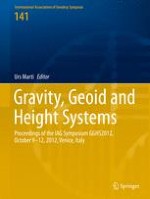2014 | OriginalPaper | Buchkapitel
Observing the Gravity Field of Different Planets and Moons by Space-Borne Techniques: Predictions by Fast Error Propagation Tools
verfasst von : P. N. A. M. Visser
Erschienen in: Gravity, Geoid and Height Systems
Aktivieren Sie unsere intelligente Suche, um passende Fachinhalte oder Patente zu finden.
Wählen Sie Textabschnitte aus um mit Künstlicher Intelligenz passenden Patente zu finden. powered by
Markieren Sie Textabschnitte, um KI-gestützt weitere passende Inhalte zu finden. powered by
